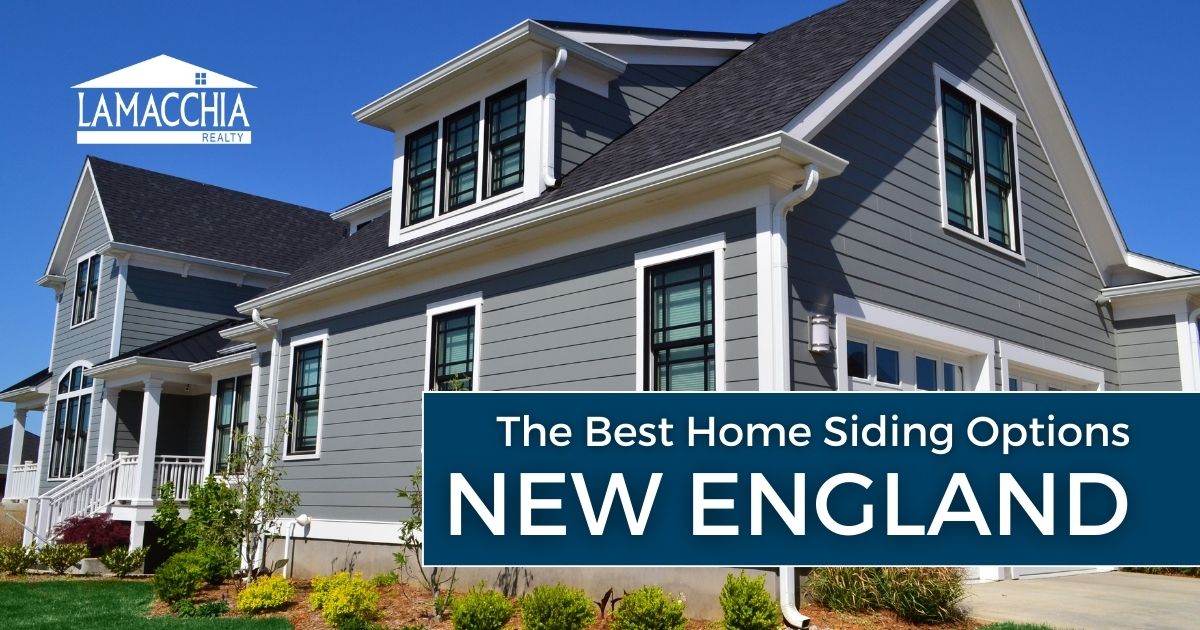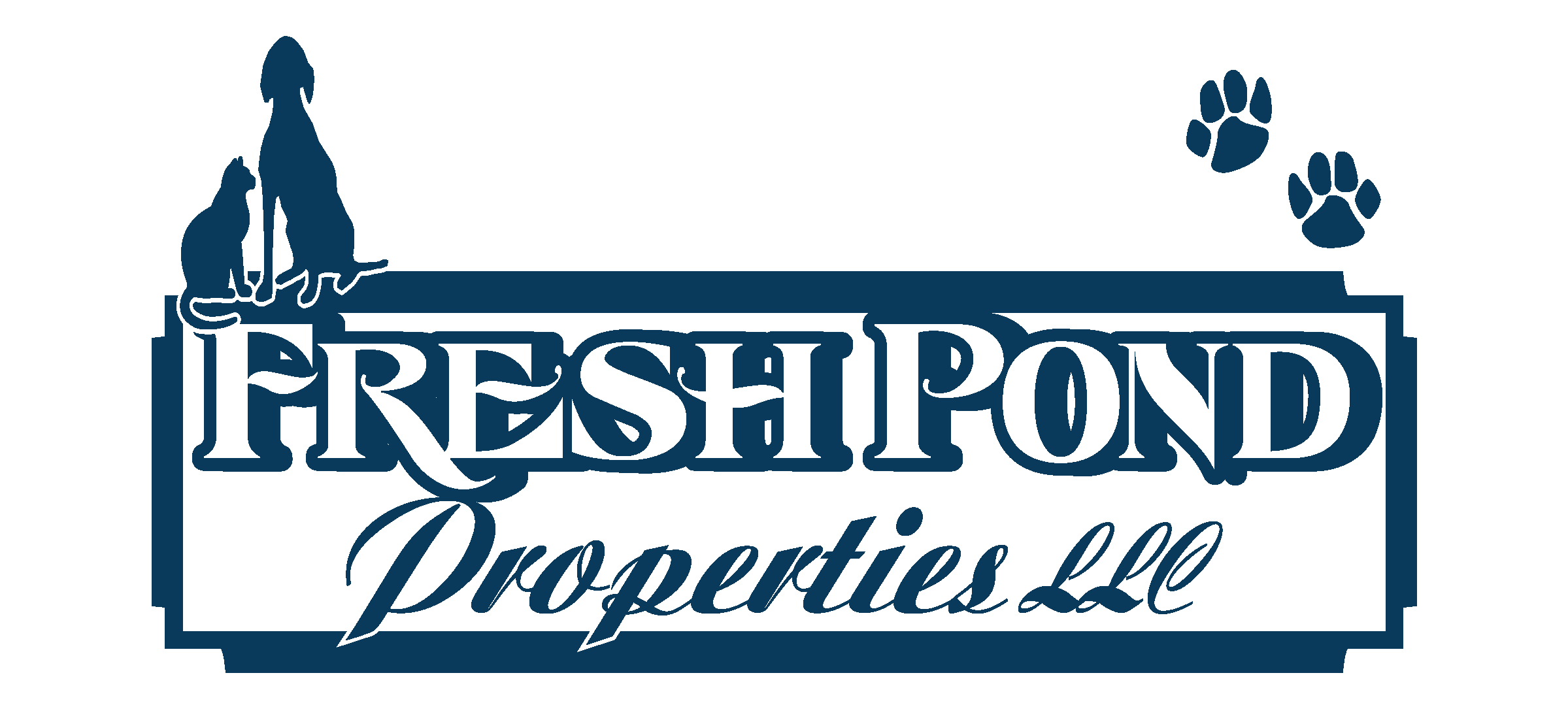
Home Siding and Exterior Maintenance
You may already be familiar with the common New England home styles, but how much do you know about exterior siding? Choosing the right siding for your home is a crucial decision, as it not only enhances your property’s curb appeal but also provides protection against this region’s varying weather conditions. But what is the best siding for your property? We’ve compiled a list of the top choices for home exteriors in New England, including fiber cement, vinyl, composite wood, and natural wood siding. Discover the advantages and disadvantages of each material, considering factors such as durability, maintenance requirements, aesthetics, and cost. Whether you’re looking for long-lasting durability, affordability, or elegance, there is a siding option that will meet your unique needs and enhances the charm and functionality of your New England home.
Fiber Cement Siding
Even though it’s one of the newer property exteriors, fiber cement siding rapidly rose in popularity following its release in the mid-1980s. By the early 1990’s it became a staple for homes in the United States because of its ability to withstand almost any weather condition. Made of affordable materials including cement, sand, and cellulose fibers, this type of siding is perfect for homeowners looking for a low-cost, durable, and beautiful exterior.
Advantages of Fiber Cement Siding
- Low Maintenance: A fiber cement exterior can be a favorable option for homeowners who don’t want to constantly monitor the upkeep. Aside from cleaning it, fiber cement siding is practically maintenance-free, saving both time and money.
- Durability: As we touched upon above, this type of exterior can take anything that mother nature can throw at it. It is extremely resistant to rain, hail, humidity, and hurricane-force winds. For those intense thunderstorms, you can have peace of mind that you and your other home residents are safe. The lifetime of this siding is also significant – it can have a lifespan of up to 50 years!
- Aesthetic: Another great feature of fiber cement siding is its versatility in aesthetics. It can come in many different styles, textures, and colors. Additionally, you can paint fiber cement to match the existing aesthetic of your home.
Disadvantages of Fiber Cement Siding
- Expensive Installation: The upfront costs of installing fiber cement siding can be more expensive than anticipated. Since it takes so long to install, the cost of labor may significantly affect the total cost.
- Bad Insulator: For those snowy New England winters, fiber cement is not the best option for insulation. If you choose this kind of exterior, you’ll want to invest in additional insulation if you want to avoid paying extremely has gas bills in the wintertime.
Vinyl Siding
Vinyl exterior has been wildly popular since the 1960s, resulting in a third of American homes having vinyl siding today. Vinyl comes in various designs and colors, making it easy for homeowners to match their siding wit the aesthetic of their home. Since it’s made of plastic, it’s inexpensive to install, however, it can require spending more money on repairs. This type of siding can be ideal for homeowners who don’t want to break the bank or be limited as far as design.
Advantages of Vinyl Siding
- Low Maintenance: Once installed, this plastic exterior does not need much maintenance aside from cleaning
- Extremely Affordable: Vinyl is considered the cheapest siding material to install, making it perfect for a homeowner looking for a budget-friendly option.
Disadvantages of Vinyl Siding
- Short Lifespan: Since the material is cheaper, the lifespan of vinyl siding is not very long. On average, this siding can only last up to 15 years.
- Repairs and Breakage: Another disadvantage of using a cheaper material is that easily breakable. Vinyl can break due to expansion in warm temperatures and contractions in cold temperatures. Vinyl can also break frequently from hail, or a rock being thrown by a lawn mower. Repairing these breakages aren’t so simple either. Even if only a small portion gets damaged, the whole plank needs to be replaced. The one silver lining is that vinyl siding repairs are typically inexpensive: ranging from $2-$4 per square foot.
- Weak Insulator: Vinyl is not a good insulator at all, so you will definitely need to invest in additional insulation for those cold New England winters.
Composite Siding
Composite siding, otherwise known as engineered wood, could be an ideal option for a homeowner who wants the aesthetic of wood, without the maintenance real wood requires. Composite wood is manufactured out of scrap wood and resin, giving the appearance of authentic natural wood. Although more expensive than fiber cement and vinyl siding, engineered wood has its advantages in terms of insulation and maintenance.
Advantages of Composite Siding
- Fairly Affordable: Although more expensive than vinyl and fiber cement siding, composite wood is the more budget-friendly option for those who prefer wooden siding. Installing composite siding can cost up to $16.50 per square foot whereas natural wood installation can cost up to $35 per square foot.
- Various Options for Aesthetic: Since this material is manufactured, there are a multitude of options for colors, textures, and finishes. It can be customized to match the overall aesthetic of your home.
- Good Insulator: Unlike fiber cement and vinyl, composite wood has a thermal barrier to insulate your house during the colder months.
- Eco-Friendly and Sustainable: Composite siding is made with only recycled wood scraps and resin, so no trees need to be forested!
- Long Lifetime: Engineered wood siding is durable and can have a lifespan between 20-30 years.
Disadvantages of Composite Siding
- Maintenance: The color of this siding is prone to fade over time. It is recommended that the paint is updated every 10 years to maintain its quality appearance.
- Prone to Cracking: Over the years, exposure to extreme heat or severe weather conditions can cause the siding to crack. When composite wood cracks, it’s important to address it IMMEDIATELY to avoid more significant damage down the line.
Natural Wood Siding
Natural wood siding, or cedar siding has been a staple for New England homes since the colonial ages. You may often see it in coastal areas in the state including Boston, Cape Cod, and Martha’s Vineyard. This siding could be a great fit for someone who is looking for natural and beautiful materials for the exterior of their home.
Advantages of Natural Wood Siding
- Long Lifespan: The lifetime of natural wood surpasses fiber cement, vinyl, and composite siding by a long shot. With regular maintenance, this siding can last up to 100 years!
- Easy to Change the Aesthetic: Since this exterior is made completely out of wood, it can be painted and stained as many times as you’d like. If the aesthetic of your interior evolves over time, the exterior can easily be changed to match.
- Fantastic Insulator: Cedar wood siding can save you a lot of money on energy bills, as it is a great insulator during the winter months. It’s likely you’ll only have to invest in a small amount of additional insulation, if any at all.
Disadvantages of Natural Wood Siding
- Very Expensive: As a raw material with a long lifespan and excellent insulation, natural wood siding is more expensive than alternative siding options. According to Angi, the average cost for installation can range anywhere $2 – $35 per square foot, making it difficult to budget for.
- Requires Regular Maintenance: Natural wood siding requires far more routine maintenance than composite, vinyl, or fiber cement. Homeowners need to pay attention to repainting, sealing, and staining to maintain the quality of the wood over its long lifetime. Its important to note that these consistent repairs will add to your overall siding costs.
- Beware of Birds and Pests: Natural wood is very attractive to pests and animals such as woodpeckers and termites. It’s crucial for homeowners to keep a close eye on any pests to prevent damage to their property’s exterior.
Siding Installation and Repair Costs
Before selecting the type of home exterior, you want, it’s crucial to explore which options will fit into your budget. The chart below breaks down the average prices for installation and repair of each material. It’s important to note that the total cost will vary based on the exterior square footage, the shape of the house, and the physical labor required. Be sure to consult with a professional contractor to ensure you make the most informed decision.
Average Cost of House Siding Installation and Repairs in New England
| SIDING MATERIAL | INSTALLATION COST | REPAIR COST |
| Fiber Cement | $6 – $13 per square foot | $3 – $11 per square foot |
| Vinyl | $2 – $13 per square foot | $2 – $4 per square foot |
| Composite Wood | $10.50 – $16.50 per square foot | $4- $13 per square foot |
| Natural Wood | $2 – $35 per square foot | $4 – $13 per square foot |
*data provided by Angi
Choosing the Right Home Exterior for You
Before selecting the type of home exterior, you want, it’s crucial to explore which options will fit into your budget. The chart below breaks down the average prices for installation and repair of each material. It’s important to note that the total cost will vary based on the exterior square footage, the shape of the house, and the physical labor required. Be sure to consult with a professional contractor to ensure you make the most informed decision.
